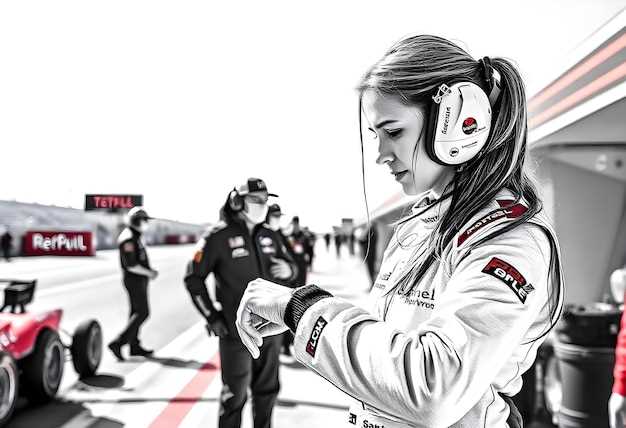
The club-level endurance racing scene has experienced a remarkable transformation over the past decade, attracting an ever-growing number of enthusiasts and athletes. Endurance racing, characterized by its emphasis on long-distance competitions, has traditionally been associated with professional circuits. However, a shift has occurred as local clubs have started to embrace this format, paving the way for more participants to engage in the exhilarating world of racing.
This growth can be attributed to a myriad of factors, including increased accessibility to endurance events and the burgeoning popularity of fitness-focused communities. Clubs have begun organizing races that cater to various skill levels, thereby creating a welcoming environment for newcomers. As participants find camaraderie and support within their local clubs, they are more likely to embrace the challenges that endurance racing presents.
Furthermore, the community aspect of club-level racing fosters an atmosphere where individuals can not only compete but also learn from one another. Networking opportunities and shared experiences within clubs enhance the racing journey, allowing members to develop their skills while forming lifelong friendships. As we delve deeper into this topic, we will explore the specific trends that contribute to the rise of club-level endurance racing and the implications for both amateur athletes and the broader racing community.
Understanding the Appeal of Club-Level Endurance Events

Club-level endurance racing has gained immense popularity among motorsport enthusiasts. This surge can be attributed to several key factors that make these events appealing to a broad audience of racers and spectators alike.
First and foremost, club racing provides a platform for amateur drivers to experience the thrill of competitive racing without the prohibitive costs associated with professional circuits. Participants can delve into the intricacies of racing, honing their skills and gaining valuable experience in a supportive environment. The accessibility of club events encourages individuals of various skill levels to engage, from novices testing their limits to seasoned racers seeking camaraderie and competition.
Another significant appeal of club-level endurance events lies in the sense of community they foster. Participants form bonds over shared experiences, exchanging knowledge, strategies, and encouragement. This camaraderie enhances the overall racing experience and creates lasting friendships among club members. The atmosphere at these events is often more relaxed than at professional races, allowing racers to focus on personal achievements rather than just podium finishes.
Additionally, club racing’s endurance format introduces unique challenges that captivate drivers. The requirement to maintain concentration and performance over extended periods tests both physical and mental endurance. This aspect of racing appeals to those who thrive on pushing their limits and experiencing the adrenaline rush that comes with sustained focus during lengthy races.
Moreover, many clubs offer comprehensive support in terms of coaching, technical assistance, and vehicle setup. Participants benefit from tailored guidance that enhances their understanding of car dynamics and racing techniques. As a result, drivers feel more prepared to tackle challenges on the track, which reinforces their commitment to the sport.
Finally, the variety of events and different vehicle categories allows participants to choose experiences that best suit their interests. From karting to sports cars, the diversity within club-level endurance racing ensures that everyone can find an entry point that resonates with them. This versatility is a significant factor driving the growth of club racing and attracting a wider audience.
In summary, the allure of club-level endurance events is rooted in accessibility, community, the challenge of endurance racing, support systems, and diverse options. These elements combine to create a vibrant atmosphere where both new and experienced racers can thrive, making club racing an increasingly popular choice for motorsport enthusiasts.
Navigating the Logistics of Organizing Endurance Races

Organizing endurance races at the club level requires meticulous planning and attention to detail to ensure a smooth experience for participants and spectators alike. The first step involves securing the right venue. Choose a location that meets the unique demands of endurance racing, including factors such as terrain, accessibility, and safety. Confirming permits and insurance is crucial to comply with local regulations and protect the club from liabilities.
Course design plays a pivotal role in the logistics of the event. A well-thought-out course should provide clear markings, adequate aid stations, and opportunities for both spectators and participants to engage fully. It’s important to consider the race distance, terrain challenges, and elevation changes while mapping out the route. Collaborating with local authorities can aid in arranging necessary road closures or access points for emergency services.
Participant registration is another key element. Implementing an efficient online registration system simplifies the process for both the organizers and racers. It is essential to collect pertinent information, such as emergency contacts and medical details, which can be invaluable during the event. Additionally, keeping participants informed with pre-race communications regarding schedules, guidelines, and what to expect enhances the overall experience.
Volunteers are the backbone of endurance races. Recruiting and training a dedicated team ensures that various logistical aspects, such as timing, hydration stations, and crowd control, run smoothly. Assign clear roles and responsibilities to volunteers, and provide them with thorough training to handle emergencies and communicate effectively with participants.
On race day, effective communication is critical. Utilize walkie-talkies or mobile apps for real-time updates among volunteers and key personnel to respond quickly to any issues that may arise. Establish a clear hierarchy for decision-making and ensure that all team members know whom to contact during emergencies.
Post-race logistics, including timing results, awards distribution, and clean-up, are also important. Make sure to have a clear plan in place for these tasks to maintain a positive experience for racers, encouraging their return for future events. By meticulously addressing the logistical components of organizing endurance races, clubs can create memorable and successful events that foster community and promote the spirit of racing.
Maximizing Performance: Training Tips for Club Racers
To enhance performance in club-level endurance racing, a structured training plan is essential. Start by setting clear, achievable goals. Define what you want to accomplish in terms of distance, speed, and race completion time.
Incorporate a variety of training methods to build endurance. Long, steady-state runs or rides help improve your aerobic capacity. Aim for a weekly long session, gradually increasing distance over time to adapt your body to prolonged efforts.
Include interval training to develop speed and strength. High-intensity intervals push your limits and enhance your anaerobic threshold. Perform sessions that alternate between intense efforts and recovery periods to maximize your cardiovascular fitness.
Strength training should not be overlooked. Incorporate functional exercises targeting core, legs, and upper body to improve overall power and stability. Focus on compound movements such as squats, deadlifts, and lunges, which are beneficial for racing performance.
Recovery is vital. Allow ample rest days to prevent burnout and reduce the risk of injuries. Use techniques like stretching, foam rolling, and hydration to aid recovery processes. Monitor your body’s response to training changes and adjust your regimen accordingly.
Nutrition plays a key role in endurance racing. Fuel your body with a balanced diet rich in carbohydrates, proteins, and healthy fats. Hydrate adequately before, during, and after training sessions to maintain optimum performance levels.
Consider working with a coach or joining a club for additional support. Access to experienced trainers and fellow racers can provide valuable insights and motivation, helping you stay on track toward your goals.
Lastly, practice race simulations. Mimic race conditions during training to prepare mentally and physically. This includes testing nutrition strategies, pacing, and equipment choices to ensure readiness on race day.



